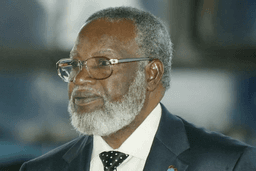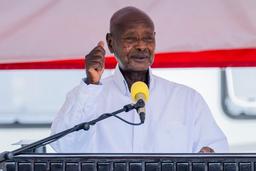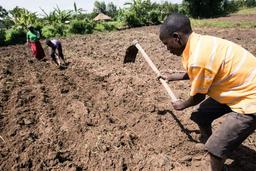Benin
Benin is a small West African country located on the Gulf of Guinea, bordered by Nigeria, Togo, Burkina Faso, and Niger. Known as the birthplace of Vodun (Voodoo) and the former home of the powerful Kingdom of Dahomey, Benin is rich in history and cultural heritage. Its major cities include Cotonou (the commercial hub), Porto-Novo (the official capital), and Ouidah, a historic center of the transatlantic slave trade. Benin offers a mix of coastal beauty, cultural festivals, and wildlife adventures, including Pendjari National Park, one of West Africa’s top safari destinations. The country is French-speaking and has a peaceful, welcoming atmosphere, making it a unique destination for travelers seeking authentic experiences off the beaten path.


14.8 Million

West Africa

114,763 sq km

UTC +1 hour

French

Fr CFA

Christianity,Islam

Patrice Talon
Brief
Benin, officially known as the Republic of Benin, is a vibrant West African nation rich in history, culture, and natural beauty. Located on the western coast of Africa, it is bordered by Togo to the west, Nigeria to the east, Burkina Faso and Niger to the north, and the Atlantic Ocean to the south. Covering an area of approximately 114,763 square kilometers, Benin serves as a bridge between the Sahelian regions of the north and the more tropical southern coastline.
Historically, Benin was home to several powerful and influential kingdoms, including the famous Kingdom of Dahomey, which played a significant role in regional politics and trade from the 17th to the 19th centuries. This rich history is reflected in the country’s numerous cultural traditions, art forms, and historical sites that continue to attract scholars and tourists alike.
Today, Benin is known for its diverse population of around 13 million people, comprising various ethnic groups such as the Fon, Yoruba, and Bariba, each contributing unique languages, customs, and traditions. The country’s official language is French, a legacy of its colonial past under French rule, which ended with Benin’s independence in 1960.
Economically, Benin is primarily agrarian, with a large proportion of its population engaged in farming, fishing, and trade. The nation has been gradually developing its infrastructure and industries, focusing on sectors like cotton production, palm oil, and tourism. Cotonou, the largest city and economic hub, is home to the country’s major port and bustling markets.
Politically, Benin has gained recognition for its stable democracy in a region often challenged by political upheaval. Since the 1990s, it has maintained a multi-party political system with regular elections, fostering an environment conducive to growth and development.
Benin’s natural landscape is marked by a mix of coastal lagoons, savannahs, and forests, offering a habitat for diverse flora and fauna. The country also boasts cultural festivities, vibrant music, and traditional religious practices that enrich its social fabric.
In summary, Benin is a country with a profound historical legacy, cultural richness, and a promising future as it navigates the challenges and opportunities of the 21st century.
Photos and Videos




National Anthem
Cultural life
Cultural milieu
Benin’s cultural milieu is a vibrant blend of diverse ethnic groups, languages, and traditions, rooted in a rich history and shaped by both ancient and modern influences. With over 60 ethnicities—such as the Fon, Yoruba, and Bariba—Benin’s society is marked by a pluralistic cultural environment where indigenous languages coexist with French, the official language. The country is famously the birthplace of Vodun (Voodoo), a traditional religion that remains central to social and spiritual life alongside Christianity and Islam. Benin’s artistic heritage includes distinctive music, dance, textiles, pottery, and bronze work, reflecting its historical kingdoms like Dahomey. Festivals such as the Voodoo Festival and Gelede celebration highlight the nation’s communal spirit. Beninese cuisine, rich with local staples and spices, adds another dimension to its cultural identity. Today, Benin balances tradition with modernity, particularly in urban centers like Cotonou, where cultural expressions continuously evolve while preserving their roots.
Daily life and social customs
Daily life in Benin is deeply influenced by family, community, and tradition. Most people live in extended family households where respect for elders and communal decision-making are highly valued. Social gatherings, markets, and religious ceremonies play an important role in everyday life, fostering strong community bonds.
Beninese people often start their day early, with many engaged in agriculture, trading, crafts, or small businesses. Markets are lively hubs where locals buy and sell food, textiles, and handmade goods, serving as both economic centers and social meeting points.
Hospitality is a key social custom—guests are warmly welcomed and often offered food or drink as a sign of respect and friendship. Greetings are formal and polite, with handshakes, sometimes accompanied by inquiries about one’s health and family.
Traditional attire is commonly worn during festivals and ceremonies, with vibrant fabrics and intricate designs reflecting cultural identity. Religion, especially Vodun, Christianity, and Islam, influences daily rituals and celebrations.
Respect, community solidarity, and maintaining harmonious relationships are central to Beninese social customs, ensuring that traditions and values are passed down through generations.




Cuisine
Benin’s cuisine is a flavorful and diverse reflection of its cultural richness, geographic diversity, and agricultural heritage. Rooted in traditional West African cooking methods, it features a variety of staple ingredients such as maize, millet, rice, yams, cassava, beans, and plantains, which form the basis of many dishes.
Meals in Benin often center around thick porridges or dough-like staples called “pâte” or “akassa”, made from corn or fermented maize, which are typically served with flavorful sauces or stews. These sauces are often prepared using locally available ingredients like tomatoes, onions, chili peppers, palm oil, and a variety of leafy greens.
Proteins such as fish, chicken, goat meat, and occasionally beef or bushmeat are commonly included, depending on the region and availability. Seafood is especially prominent in southern coastal areas, while inland communities rely more on poultry and game.
Beninese cuisine is notable for its bold use of spices and seasonings, including hot peppers and aromatic herbs, which lend vibrant flavors to dishes. Palm oil is a key ingredient, adding a distinctive reddish color and rich taste to many traditional meals.
Popular dishes include “amiwo” (a spicy red cornmeal dish), “wagasi” (a soft cheese made by the Fulani people), and “pâte rouge”, a spicy tomato-based stew. Street food also plays an important role in everyday eating, with snacks like fried plantains (called “dodo”), akara (bean fritters), and grilled meats widely enjoyed.
Meals are often communal and serve as important social occasions that bring families and communities together. The preparation and sharing of food are deeply embedded in Beninese hospitality and culture.
Overall, Benin’s cuisine offers a rich sensory experience that celebrates the country’s agricultural abundance, cultural diversity, and traditional culinary wisdom.




Music
Benin’s music is a vibrant and essential part of its cultural identity, deeply rooted in traditional practices and evolving through modern influences. With a rich ethnic diversity, including the Fon, Yoruba, and Bariba, each group brings unique rhythms, instruments, and musical expressions. Traditional music is closely tied to the Vodun (Voodoo) religion, featuring ritual drumming, chants, and call-and-response vocals that are central to spiritual ceremonies. Percussion instruments like talking drums, djembe, batá, shekeres, and balafons form the backbone of these traditional sounds. Music in Benin plays a key role in social life, accompanying births, marriages, funerals, and initiation rites, while also preserving oral history and cultural values through storytelling. In contemporary settings, Benin has developed a dynamic music scene blending traditional rhythms with genres like Afrobeat, highlife, reggae, hip hop, and zouk. Globally recognized artists such as Angélique Kidjo have brought Beninese music to the world stage, mixing native sounds with funk, jazz, and soul. Others, like Gnonnas Pedro and Sagbohan Danialou, have also contributed to the country's musical legacy. Overall, music in Benin is more than entertainment—it is a living tradition, a means of communication, and a powerful reflection of national identity and community life.




DJ& Yang-iL
The arts
The arts of Benin reflect the country’s deep cultural roots, spiritual beliefs, and ethnic diversity, encompassing traditional forms such as sculpture, metalwork, textiles, pottery, beadwork, and performance. Wood and ivory carvings often represent deities or ancestors and are used in religious ceremonies, while masks play central roles in festivals and masquerades. Beninese artisans are also skilled in bronze casting and ironwork, crafting ceremonial statues, jewelry, and tools. Textile arts, such as handwoven cotton fabrics and traditional dyeing techniques like batik and adire, carry symbolic patterns tied to identity and status. Pottery, usually handmade by women, serves both domestic and ritual purposes, and beadwork is widely used for adornment and spiritual protection. Performance arts—especially dance, music, and masquerades—are vital aspects of cultural life, with dances expressing social values and spiritual beliefs. In contemporary Benin, artists merge traditional themes with modern styles, exploring issues such as heritage, identity, and colonization through painting, sculpture, and photography. Across both rural and urban areas, art remains a powerful tool for storytelling, cultural preservation, and community expression in Benin.




People
Ethnic groups
Benin is home to over 60 ethnic groups, each with its own language, customs, and traditions, contributing to the country's rich cultural diversity. The largest group is the Fon, primarily located in the south-central regions around Abomey and known for their historical link to the Kingdom of Dahomey and their strong association with the Vodun religion. The Yoruba, living mainly in southeastern Benin near the Nigerian border, share cultural and linguistic ties with their Nigerian counterparts and are known for their religious practices and artistry. The Adja, found in the southwest, are one of the oldest groups in southern Benin and are closely related to the Fon and Ewe peoples. In the northeast, the Bariba (or Baatonou) people have a strong warrior heritage and Islamic tradition, with Parakou and Nikki as cultural centers. The Somba, or Betammaribe, inhabit the mountainous northwest and are recognized for their unique fortified mud homes called "Tata Somba" and their elaborate initiation rituals. The Dendi, living in the north along the Niger River, are part of the larger Songhai cultural group and are known for their Islamic traditions and history in trade. Other smaller ethnic groups, such as the Mahi, Goun, Fulani (Peulh), Otamari, and Tchamba, also play significant roles in Benin’s cultural landscape. Together, these groups form a mosaic of languages, spiritual practices, social customs, and artistic expressions that shape the national identity of Benin while maintaining their distinct regional and cultural identities.





Religion
Religion in Benin is diverse, deeply rooted, and integral to daily life, with traditional African beliefs, Christianity, and Islam coexisting peacefully across the country. Benin is widely recognized as the birthplace of Vodun (Voodoo), a traditional religion practiced primarily in the south among the Fon, Ewe, and Yoruba peoples. Vodun centers around the worship of natural forces, spirits, and ancestors, with rituals involving drumming, dance, offerings, and spirit possession, reflecting a worldview that influences art, medicine, and social customs. It is officially recognized by the state, with January 10 celebrated as National Vodun Day. Christianity, introduced during colonial times by Portuguese and French missionaries, is now the largest religion, especially in the south and urban areas. Roman Catholicism dominates, but Protestant and Evangelical churches have also grown significantly. Many Christians also maintain elements of traditional beliefs, creating a syncretic religious culture. Islam, mainly practiced in the north by the Bariba, Fulani, Dendi, and some Yoruba communities, is predominantly Sunni and generally moderate. Islamic customs influence northern life through clothing, festivals, and Quranic education. Across Benin, it is common for individuals and families to blend religious practices—attending church or mosque while also participating in traditional ceremonies. This religious syncretism and mutual respect foster a unique atmosphere of tolerance and coexistence, making Benin one of West Africa’s most spiritually and culturally inclusive nations.




Settlement patterns
Settlement patterns in Benin are influenced by geography, ethnicity, historical kingdoms, and economic activity. The population is unevenly distributed, with the southern coastal region—especially around cities like Cotonou, Porto-Novo, and Abomey-Calavi—being the most densely populated due to greater economic opportunities, infrastructure, and access to the sea. This region is more urbanized, with large towns and cities serving as administrative, commercial, and cultural centers. In contrast, central and northern Benin are more sparsely populated and predominantly rural, with people living in small villages and farming communities. These areas are characterized by traditional compounds and settlements organized along ethnic lines, such as the Bariba in the northeast and the Somba in the northwest, who live in unique fortified homes called “Tata Somba.” Along rivers and fertile plains, settlements often cluster around agricultural zones, while in arid or less fertile regions, populations are more scattered. Overall, Benin’s settlement pattern reflects a mix of urban growth in the south and traditional, subsistence-based rural life in the interior and north, with migration trends increasingly drawing people toward urban centers in search of education, healthcare, and employment.




Demographic trends
By early 2025, Benin’s population reached approximately 14.8 million, growing annually at 2.4 – 2.5 percent, with a net increase of about 350,000 people per year. The country is youthful—the median age is just 18 years, and nearly 45% of the population is under 15 —but life expectancy has risen to around 61 years . Fertility remains high, at roughly 4.4–4.5 births per woman, though it’s declining from past levels around 5–6Urbanization is increasing steadily: nearly 48% now live in cities—up from about 42% a decade ago—with rapid growth in coastal hubs like Cotonou, Porto‑Novo, and Abomey‑Calavi CIA+1The Guardian+1. The population density averages around 130 people per km², concentrated in the south, while the north remains sparsely populated Wikipedia+8worldometers.info+8CIA+8. The dependency ratio is high—about 84 dependents per 100 working-age individuals—but is projected to decline as the working-age population grows, potentially easing economic pressures by 2050 . Overall, Benin is undergoing a youthful population boom, moderate urban expansion, and gradual improvements in health indicators, setting the stage for a potential demographic dividend as more people enter the workforce.

Touristic Cities
Porto-Novo
Porto-Novo is a port city and the capital of Benin, in West Africa. It’s known for colonial buildings like the Brazilian-style Great Mosque, formerly a church. The Ethnographic Museum displays ceremonial masks, musical instruments and costumes. The Musée da Silva recounts Benin’s history and celebrates Afro-Brazilian culture. Just east, the Honmé Museum was King Toffa’s 19th-century royal palace.




Cotonou is Benin’s largest city and its economic and political center, despite Porto-Novo being the official capital. Located between the Atlantic Ocean and Lake Nokoué, it serves as a major port and trade hub for West Africa, linking to landlocked countries like Niger and Burkina Faso. With a population exceeding 2 million in its metro area, Cotonou is a fast-growing urban center driven by commerce, manufacturing, and a thriving informal sector.
Key landmarks include Dantokpa Market—one of the largest open-air markets in West Africa—Cotonou Cathedral, and the Fondation Zinsou art museum. Nearby, the stilt village of Ganvié offers a unique cultural experience. The city faces urban challenges such as congestion, infrastructure strain, and coastal erosion, but ongoing development projects aim to modernize and protect its future. As a dynamic blend of tradition and progress, Cotonou remains a vital gateway to West Africa.
Grand-Popo
Grand-Popo is a peaceful coastal town in southern Benin, near the Togo border, known for its unspoiled beaches, rich cultural heritage, and ecotourism. Nestled between the Atlantic Ocean and the Mono River, it offers activities like mangrove boat tours, visits to La Bouche du Roy estuary, and turtle-watching. It is a center of Vodun (voodoo) culture, hosting annual festivals like the National Voodoo Festival and Nonvitcha. Historic sites, traditional fishing villages, and cultural centers like Villa Karo add to its charm. Grand-Popo is ideal for travelers seeking nature, culture, and coastal relaxation.




Accomodation
Guest houses
Guest houses in Benin offer a mix of cozy comfort, local culture, and affordable hospitality, with many found in Cotonou, Grand-Popo, and Ouidah. These guesthouses range from beachfront bungalows and garden retreats to artist residencies and boutique-style lodges. They often include amenities like breakfast, WiFi, airport transfers, and eco-friendly settings. Many are ideal for solo travelers, couples, or anyone seeking a quiet and authentic experience in Benin.




Hotels and resorts
Hotels and resorts in Benin range from budget-friendly accommodations to upscale properties offering luxury and comfort. In cities like Cotonou, Porto-Novo, and tourist spots such as Grand-Popo and Ouidah, you’ll find a variety of options including beachfront resorts, city-center hotels, and eco-lodges. Many resorts provide amenities like swimming pools, restaurants, conference facilities, and beachfront access, catering to both leisure and business travelers. Whether you’re looking for a relaxing seaside retreat or convenient urban lodging, Benin’s hotels and resorts offer a blend of modern comforts and local charm to suit diverse travel needs.




Camping
Camping in Benin offers a unique chance to connect with nature in stunning settings like Pendjari and W National Parks, where you can experience wildlife safaris up close. It’s an affordable and adventurous way to explore the country’s rich biodiversity and beautiful landscapes. Many camping sites provide peaceful, scenic environments, perfect for relaxation and outdoor activities like birdwatching and hiking. Camping also allows travelers to enjoy Benin’s coastal areas and immerse themselves in local culture away from crowded tourist spots.




Documents to be submitted for your application
- A valid passport (with at least 6 months validity and 2 blank pages)
- A completed visa application form
- Two recent passport-size photos
- Proof of travel (flight booking)
- Proof of accommodation (hotel booking or invitation letter)
- Proof of sufficient funds (bank statements)
- A Yellow Fever vaccination certificate
For business or hosted visits, you may also need an invitation letter or sponsorship documents. If applying online for an e-visa, the requirements are simpler—mainly your passport, photo, travel details, and proof of stay.
Economy of Benin
Agriculture, forestry, and fishing
Agriculture, forestry, and fishing form the backbone of Benin’s economy, supporting the majority of its population, especially in rural areas. Agriculture is the dominant sector, with crops like cotton, maize, cassava, and cashew nuts playing a central role in both food supply and exports. Forestry, though limited, contributes to rural livelihoods through the use of timber, firewood, and other natural resources. Fishing, particularly along the coast and in inland waters like Lake Nokoué, remains a vital source of food and income, with growing interest in aquaculture. Together, these sectors are essential for employment, food security, and the country’s economic development.




Resources and power
Benin is making steady progress in strengthening its resources and power sector. Though traditionally reliant on electricity imports, the country is actively expanding its energy infrastructure with investments in solar power and thermal plants, aiming for greater energy independence. Projects like off-grid solar installations are improving electricity access in rural areas, while regional cooperation is enhancing grid stability. Benin’s untapped natural resources, including gold and limestone, also hold promising potential for future development. These ongoing efforts reflect the country’s commitment to sustainable growth and improved living standards through reliable energy access.

Manufacturing
Benin’s manufacturing sector is increasingly vibrant, accounting for around 10% of GDP and showing sustained growth—output rose to nearly $2 billion in 2023, up over 15% year‑on‑year . With government-led reforms and strategic investments, the country is moving from exporting raw materials to building value-added industries, especially in textiles and agro-processing. A €550 million initiative aims to create a full "farm‑to‑fashion" cotton value chain—growing, ginning, spinning, weaving, dyeing, and garment-making—set to quintuple manufacturing capacity by 2030.
Industrial zones like Glo‑Djigbé, developed through public–private partnerships (notably with Arise IIP), support the processing of cotton, cashew, Shea, and pineapple into finished goods. These zones benefit from enhanced port infrastructure in Cotonou, streamlined customs processes, and integrated logistics, making Benin a prime hub for export to regional and global markets.
While challenges remain—such as energy access and formalized supply chains—Benin's commitment to industrialization, combined with favorable demographics, export agreements, and expanding foreign investment, is fueling a promising manufacturing boom that’s creating jobs, diversifying the economy, and enhancing its global competitiveness.

Finance
Benin’s finance sector is experiencing steady and positive growth, driven by strong government reforms, increased digital financial inclusion, and expanding investment opportunities. Mobile money usage has surged, transforming how people access and use financial services across the country, especially in rural areas. The banking sector has also expanded significantly, with improved oversight and the emergence of public and digital banks enhancing access and stability. Fintech innovations and neobanks are making financial services more accessible to previously underserved populations. Backed by international partnerships and growing investor confidence, Benin’s financial landscape is becoming more modern, inclusive, and resilient, supporting both economic development and everyday financial needs.

Trade
Benin has a trade-driven economy centered around agricultural exports like cotton, cashews, and oilseeds, while importing key goods such as fuel, rice, and machinery. The Port of Cotonou plays a vital role in regional trade, especially for landlocked neighbors. Though Benin runs a trade deficit, the government is investing in infrastructure, industrial zones, and regional trade partnerships to diversify exports and boost competitiveness. Overall, Benin is steadily strengthening its position as a strategic trade hub in West Africa.

Labour and taxation
Benin operates a progressive and structured labor and taxation system that balances employee welfare, employer obligations, and national fiscal needs. Employers and workers must contribute to social security—covering pensions, health, family support, and workplace injury—typically shared between them. Employees pay approximately 3.6% of salaries, while employers contribute 15–19%, plus a 4% payroll tax. Income tax is deducted at source on a sliding scale from 0% to 30%, with low earners benefiting from tax-free thresholds and deductions for dependents. The country also levies 18% VAT, 30% corporate tax, and various consumption and property taxes to generate revenue.
Benin’s labor code supports workers with generous benefits: a national minimum wage, regulated overtime pay, paid sick leave that increases with tenure, 14 weeks of paid maternity leave, paternity leave, and severance and dismissal protections. Public holidays and annual leave are also guaranteed. Through these frameworks, Benin ensures employee protection while supporting business compliance and revenue generation—a steady foundation for social welfare and economic growth.

Transportation and telecommunications
Benin’s transportation and telecommunications landscape is marked by significant progress and ongoing challenges, creating a foundation for growth and connectivity.
Benin features a network of about 6,787 km of highways—1,357 km paved—connecting major cities and neighboring countries via the Trans‑West African Coastal Highway and key inland corridors Its rail system includes roughly 578 km of metre‑gauge tracks, with a major line stretching from Cotonou to Parakou and ongoing expansion plans to link with Niger and other neighbors. The Port of Cotonou anchors maritime transport, supported by Cotonou Cadjehoun International Airport with both regional and international flight connections.
On the telecom front, mobile connectivity is widespread: by the end of 2023, Benin had about 8.5 million unique mobile subscribers and 16.3 million SIM cards, translating to a mobile penetration rate of 67% . The sector is led by MTN, Moov Africa, and state-backed Celtiis, with coverage surpassing 95% for 2G, ~90% for 3G, and expanding 4G and 5G capabilities . Fixed-line internet remains limited—under 1% of households have broadband—but the nation is threading national fiber backbones and exploring FTTH options in urban areas.
Benin is also connected to multiple submarine cables such as SAT-3/WASC and ACE, with recent improvements to domestic fiber loops and public Wi‑Fi initiatives .However, internet penetration remains around 32–34%, with around two-thirds of the population still offline

Latest News in Benin
Politics
The first president of independent Namibia, Sam Nujoma, has died at the age of 95 in the capital Windhoek, the country's current leader has announced.
Politics
Ugandan President Yoweri Museveni has officially announced his intention to seek re-election in the 2026 presidential race, extending his nearly four-decade rule. Museveni, who has been in power since 1986, is once again positioning himself as the steady hand guiding Uganda through challenges. His decision has sparked mixed reactions, with supporters praising his leadership and longevity, while critics call for fresh leadership and political reform. As the nation looks ahead to the 2026 elections, Uganda braces for a heated political contest.
Politics
Peace Agreement with DRC Rwanda and the Democratic Republic of Congo (DRC) signed a U.S.-brokered peace deal aimed at ending conflict and promoting regional trade. Rwanda agreed to stop supporting armed groups like M23 rebels, though it denies involvement. Tensions remain, and President Kagame is cautious about whether the peace will last.
Wildlife
Tanzania has announced that all foreign tourists visiting Mainland Tanzania will be required to purchase a mandatory travel insurance policy upon arrival, beginning January 2026. The new regulation, issued by the Ministry of Finance on July 4, 2025, is part of the government reforms in the country’s 2025/26 financial year agenda. According to the notice, the measure will apply to all non-citizens, with the exception of visitors from countries that are part of the East African Community (EAC) and the Southern African Development Community (SADC). Citizens from these regions will continue to be exempt from the requirement.
Environment
In light of the growing food insecurity crisis across many African nations, heads of state and agriculture experts gathered in Nairobi, Kenya, this week to discuss solutions to address food shortages, especially in regions severely affected by climate change, political instability, and economic challenges. The two-day summit, titled “Agriculture and Climate Resilience: A Pan-African Strategy”, brought together government officials, NGOs, scientists, and international organizations to create a comprehensive strategy to improve agriculture, nutrition, and sustainable food systems across the continent.
Tech & Science
In 2025, Artificial Intelligence (AI) isn’t just a futuristic buzzword - it’s the secret weapon behind some of the world’s most successful content creators. From bloggers and YouTubers to podcasters and marketers, AI-powered tools are changing the way we brainstorm, write, design, and edit. If you've ever struggled with writer’s block, lacked design skills, or wished for faster content creation - AI might be your best assistant yet. Here’s how AI is revolutionizing the creative industry and how you can use it to boost your projects.





